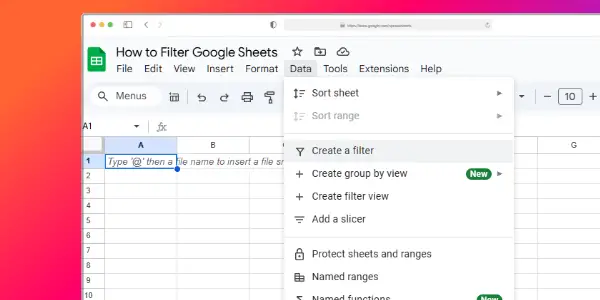Have you ever wondered what it takes to effectively manage a program? What are the formal components that go into successful program management?
The four formal components of program management are initiation, planning, monitoring and control and closure.
Initiation is the process of formally defining the purpose, goals and structure of a program.
Planning involves understanding what needs to be done to achieve the project’s goals, as well as creating tasks and assigning responsibility for those tasks.
Monitoring and control involves assessing progress towards the project’s goal and making adjustments if necessary to ensure successful completion.
Closure involves formally ending the program by ensuring that all resources are released or reallocated and actions are taken to evaluate success criteria.
Understanding the principles of program management can help individuals, businesses, and organizations reach their desired objectives. In this article, we will explore the formal components of program management and their importance in achieving success.
Program Definition
Program definition is a crucial part of program management because it sets the scope and objectives for the program. It also identifies the resources and risks that are associated with the program. To ensure that all stakeholders have a shared understanding of the program, program definition should include key documents such as a vision statement, project charter, and scope document.
This section will provide an overview of the formal components of program definition:
Establish program objectives
The first step in the program definition phase is to establish the program objectives. This will ensure the program is designed and managed in such a way that it meets all of the needs of its stakeholders. These objectives should be separated into short-term and long-term goals, and they should each be specific, measurable and achievable.
For example, a short-term objective might be to launch a new product within six months while a long-term objective might be to increase customer satisfaction ratings by 20% over five years. It’s important to note that objectives can change over time as new requirements arise or aspects of the program evolve, but they must be well-defined so that project teams have defined expectations to which they can hold themselves accountable.
Define the scope of the program
Defining the scope of a program is an important part of successful program management. It involves identifying the programs deliverables, stakeholders, boundaries, start and end dates, and expected outcomes.
Through an in-depth analysis of the desired outcomes and goals of a program, the scope statement serves as a guide for project teams to monitor their progress throughout the duration of the program. It should also provide clear guidelines for setting expectations with project stakeholders regarding what can be expected from the program initiatives.
When defining the scope of a program, stakeholders should agree on a common definition that addresses specific objectives and outcomes that must be met in order to achieve success. This includes:
- Setting measurable deadlines for completion and determining which resources are needed to accomplish it.
- Defining key performance indicators related to budgeting and cost management to properly track progress.
- Keeping all stakeholders updated throughout all stages of development so that changes or alterations can easily be made if necessary.
Develop a program strategy
Developing a program strategy helps ensure that the overarching objectives, goals, and objectives are clearly articulated and agreed upon by everyone involved. This includes stakeholders and staff, both internal and external to the organization. It is important to ensure consensus on key issues such as target markets, budget limitations, mission and vision statements, timeframes for implementation, outcomes desired, and rule sets. The program strategy should be based on an analysis of the desired results in order to set a foundation for making essential decisions.
In order to create an effective program strategy:
- Clearly define objectives in detail – this should include specific metrics where applicable – that will help guide the decision-making process.
- Develop a timeline of activities with a focus on milestones while taking into account any regulatory or funding deadlines.
- Identify key stakeholders that have authority to approve aspects related to budgeting, scheduling changes, etc., making sure that everyone is informed before any decisions are set in motion.
- Utilize existing success models relevant to the project in order to ensure that each team member knows exactly what kind of results is expected from them.
- Analyze risks so as to better prepare for potential pitfalls or delays due to unforeseen circumstances.
- Create communication standards between stakeholders at all levels such as agreed upon channels for conveying messages so that no one person has too much responsibility for passing along urgent messages or updates about project status among other things.
Program Planning
Program planning is the first step in program management, as it defines and establishes the scope of the program and also outlines the objectives in order to be successful. Program planning can help to reduce risks associated with the program, identify dependencies, and align the program with organizational goals.
In this section, we will be discussing the formal components of program planning and how it can help to ensure the success of your program:
Create a program plan
Creating a program plan is an essential step in the process of program management. The plan should provide the framework and goals of the program, and it should be designed to ensure that those goals are achieved. It provides a roadmap for project teams to follow, with clarity on how tasks will be sequenced and integrated into the overall strategy.
At its most basic level, a program plan must address four core components:
- The mission or purpose of the program – this defines why we’re undertaking the program, as well as its expected benefits.
- The stakeholders and their obligations – this outlines who will be affected by or involved in making decisions throughout the course of the program implementation.
- The resources needed to support implementation – this identifies what is necessary for successful implementation, including material resources such as people, hardware, software and facilities.
- The time frame for project completion – this includes consideration for both short-term activities needed to begin implementing immediately and longer term activities necessary for successful completion of all objectives laid out in the mission statement.
Additionally, a good plan carefully considers risk management strategies that anticipate potential pitfalls and provide ways to respond quickly if they occur so that delays can be avoided or reduced. By taking these factors into account before beginning a project, organizations can develop effective plans that help ensure success in their programs.
Define program activities and tasks
Planning a program involves breaking the project down into individual parts and determining what activities must be carried out to achieve successful completion of the project. Having a clear set of distinct program activities and tasks will help keep everyone involved informed, organized and on track. Program activities can include:
- Conducting research to better understand the need for the program
- Developing a budget for the project
- Developing program objectives, outcomes and performance measures
- Identifying potential resources who can help deliver the program
- Recruiting staff and volunteers to deliver the program
- Securing locations for delivery of the program
- Organizing project timelines with milestones, benchmarks and deadlines
- Creating job descriptions for staff and volunteers
- Designing materials, communication pieces, evaluation tools or marketing materials, as needed
- Developing or selecting curriculum or content
- Planning learning, training or development experiences
- Coordinating meetings/events/workshops associated with delivering the program
- Organizing logistical details (such as AV needs, catering) related to meetings/events/workshops
- Evaluating progress throughout implementation of the program.
Identify resources and develop a budget
In order to properly plan a program, it is important to identify the resources needed to implement the program and develop an accurate budget. It is essential to take the time to thoroughly research potential providers of resources and services in order to ensure that the best possible options are available. Developing a budget should also include researching potential grant opportunities, as well as any cost-saving methods that may be available.
For example, if sourcing vendors or materials for supplies, do the research upfront and consider cost efficiencies when making choices. Additionally, if financial assistance is needed, consider requesting dues from members participating in the program or establish new sponsorships or partnerships that could provide funding. Other ways of raising funds include launching fundraising campaigns or hosting special events as part of your program outreach.
Funding allocated towards programs will ultimately determine how successful they can be and should not be taken lightly. Take into account all potential sources of revenue when forming your budget and enough savings for any unforeseen circumstances that may arise throughout implementation.
Program Implementation
Program implementation is a crucial component of program management and is the process of putting into action the strategies, plans and procedures developed during program planning. It includes the activities necessary to put the program into operation, such as assigning resources, budgeting and setting timelines.
Program implementation is the process of turning ideas, strategies and plans into action in order to achieve a desired result. It is the culmination of program planning and is a key element in successful program management.
Monitor and control program activities
The program manager plays a critical role in ensuring that the program is completed on time and within budget. Monitoring and controlling program activities is key to the successful delivery of desired outcomes.
Monitoring activities involves tracking progress against performance metrics, observing resource utilization trends and auditing the quality of deliverables. Control activities include corrective measures, when necessary, to address performance issues and mitigate risks. The timing of control steps should be aligned with the evaluation criteria and performance indicators established during project planning.
To ensure effective monitoring and control, clear expectations must be established at the beginning of the project or program. Responsibility for issuing reports, rectifying identified issues or taking preventive measures should be assigned to team members in accordance with their respective roles within the initiative. As progress is made against milestones, reviews of financials against estimated costs can help detect any impending budget overruns before it’s too late take corrective steps.
In addition to tracking financials, deliverable status should also be closely monitored since delays can be a major cause for concern among stakeholders. Through consistent review of operational output such as customer surveys or defect reports, any negative customer feedback should be quickly responded to by project teams through appropriate customer service strategies designed to meet customer objectives satisfactorily.
Identify and manage risks
Successful program implementation requires a comprehensive approach and thorough analysis of the risks involved in the program. Risk identification, analysis, and management is an important component of the implementation process and should be taken into account when developing plans and strategies.
Identifying potential risks involves analyzing potential hazards before they become obstacles, such as examining personnel management plans or technical specifications that may fall short. Analysing risks involves evaluating the likelihood of their occurrence and estimating the impact that they could have on the project. Lastly, effective risk management means creating plans to introduce risk-mitigating solutions to reduce these future obstacles or prepare for them if they occur. These methods include proactive anticipation of key events throughout development as well as corrective action when something occurs contrary to expectations.
Each organization’s project plan should consider all possible components necessary for successful program implementation from feasibility studies to risk identification, analysis and management. These activities must then be mapped out in a logical timeline with milestones set for each stage to ensure continued momentum toward launch. In order for any given organization to ensure a successful program launch, it is essential that all elements have been effectively planned out with adequately trained staff or outsourced teams who can execute on schedule with minimal disruption or rework needed later on in the process. Having an effective framework laid out at each stage ensures that any unforeseen issues can be identified, assessed and managed along with other key successes factors such as cost control and stakeholder engagement strategies.
Monitor program performance
Monitoring the execution of a program is a critical component of achieving its goals. An effective program management system should involve continued tracking and analysis of a program’s performance in order to identify areas that need improvement, corrections or adjustments.
The goal of monitoring program performance is to evaluate progress against the objectives, milestones and deliverables defined in the Program Plan. Managers should regularly assess progress and attempt to identify risks or potential issues early on in order to take corrective action as soon as possible.
Evaluations should involve regular check-ins between team members, assessors and stakeholders, with feedback loops in place to identify potential problems before they arise. A comprehensive understanding of the project’s goals, timeline and resource utilization is required for proper implementation. Progress isn’t just measured against these elements either; metrics such as customer satisfaction or ROI are also taken into account.
Tools like dashboards, reports and metrics-tracking software can provide up-to-date snapshots of progress during each phase of the project lifecycle. The right tracking tools can make it easy for managers to monitor performance quickly and effectively throughout the lifecycle while also allowing them to adjust course when needed. This helps organizations better manage resources while delivering successful projects on time and within budget.
Program Evaluation
Program evaluation is an important component of program management, it is a systematic approach to assess the relevance, effectiveness, efficiency and impact of projects and programs. It is used to provide feedback to decision makers, stakeholders and program management to improve the program’s performance and effectiveness.
This section will discuss the key elements of program evaluation, such as:
- Planning
- Implementation
- Data Analysis
Evaluate program performance against objectives
Evaluating a program’s performance against its objectives is essential for determining success and progress towards meeting goals. It entails going beyond financial performance indicators by also considering outcomes related to policy, processes, products and services. Program evaluation involves collecting data from stakeholders, analyzing the data and making recommendations or conclusions based on the findings.
To gain a comprehensive understanding of how well an organization’s program is performing, organizations should evaluate its objectives at multiple levels and frequently review performance metrics.
Organizations should first establish key performance indicators (KPIs) that tie back to the program’s purpose and desired outcomes. Core KPIs typically include evaluations on usage, accessibility, quality of service/products and impact on target audiences. Additionally, organizations may use metrics such as customer satisfaction scores or surveys to help assess the success of a program in comparison to its predefined objectives.
Program evaluation aims to provide valuable feedback both internally within an organization as well as externally to shareholders or other stakeholders (e.g., customers). Internal stakeholders rely on clear KPI results in order to make decisions regarding resource optimization while external studies usually focus on competitiveness, efficiency and customer satisfaction results. Summarizing findings provides insight into any areas needing improvement that can better help direct decision making processes while also showcasing any successes achieved by the program’s goals.
Identify areas for improvement
Identifying areas for improvement is a vital step in the formal process of program evaluation. Through this step, progress can be tracked as goals are achieved and further improvement can be identified. As part of a comprehensive process, areas for improvement should be evaluated from multiple perspectives and by multiple stakeholders.
When considering which areas need to be improved, it is important to take into account all the components of the program management process:
- Overall program strategy
- Personnel performance
- Results tracking and reporting systems
- Quality assurance measures
- Communication systems
- Customer satisfaction
It is also beneficial to analyze customer feedback or market surveys that have been conducted prior to launching the program.
Once all relevant components have been evaluated, areas for improvement should be broken down into specific objectives with measurable outcomes. Objectives should be realistic, achievable in a specific timeframe and divided among teams or individuals with clear lines of accountability and expectations. In addition, evaluations should consider financial implications associated with meeting objectives (such as budget requirements) as well as any possible risks or challenges that may arise during implementation. Overall success should also be measured through periodic reviews of results collected throughout the evaluation process to ensure desired outcomes are achieved.
Develop recommendations for future program management
Program evaluation is a systematic process of assessing program performance when the program has been fully implemented. It includes analyzing impacts, successes, and cost-effectiveness of activities to make informed decisions about the future. This can be used to judge the efficiency and effectiveness of programs or services in order to determine whether or not they meet their intended purpose.
The primary goal of program evaluation is to develop recommendations for future program management. Evaluation might include collecting data from stakeholders and beneficiaries, analysis of performance relative to stated requirements and objectives, comparison with similar programs or services, and measurement of outcomes that demonstrate success against predetermined goals.
In order to ensure quality control measures are in place, it is important to utilize a formal process that provides consistent methods for program evaluation and reporting. Program evaluation techniques should include:
- Observation techniques (e.g., observation binder review)
- Interviews (e.g., stakeholder surveys)
- Focus groups (e.g., whiteboarding session)
- Surveys (e.g., client satisfaction surveys)
- Reviews (e.g., protocol assessments)
Program managers should also define specific measures that will be used as indicators of success throughout the life-cycle stages of the project or initiative including planning, implementation and outcome/impact assessment evaluations. Evaluation results should also provide feedback on how well various components are working in total as well as identifying areas where more support may be needed and provide possible corrective actions if required.
What Role Does Program Management Play in Implementing Change Management Plans?
Program management plays a crucial role in implementing change management plans. It ensures that all aspects of the put together change management plan are seamlessly integrated into the overall project framework. Program managers facilitate communication and coordination across different teams to effectively drive organizational change.
Frequently Asked Questions
Q: What is program management?
A: Program management is the process of managing multiple related projects, often with the intention of improving an organization’s performance. It involves planning, coordinating, and managing resources and activities to achieve a desired outcome.
Q: What are the formal components of program management?
A: The formal components of program management include: establishing a governance structure; setting program objectives; creating a program budget; defining roles and responsibilities; developing a program plan; and managing changes, risks, and communications.
Q: What are the benefits of program management?
A: Program management can help organizations achieve their strategic objectives, improve efficiency and effectiveness, and increase customer satisfaction. It can also help to reduce costs, improve quality, and reduce time to market.





